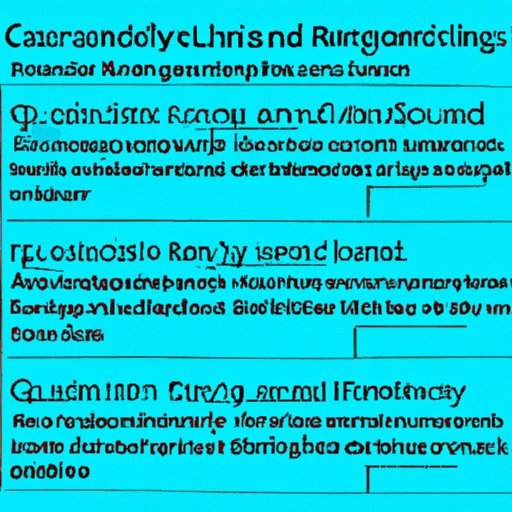Introduction
Redundancy in computer science is a method of protecting data from errors or other forms of failure. It is the practice of storing multiple copies of data on different systems or devices, so that if one system fails, the other can take over with minimal disruption to the user. Redundancy is an important tool for ensuring data security and improving system performance, but it also has some drawbacks that must be taken into account when implementing it. This article will explore the benefits and drawbacks of redundancy in computer science, as well as examining the different types of redundancy available and their role in fault tolerance.

Overview of Redundancy in Computer Science
Redundancy has both advantages and disadvantages. On the one hand, it can improve data security by providing multiple copies of data stored in separate locations or formats. This ensures that if one copy is lost or corrupted, the others remain intact. Additionally, redundancy can improve system performance by allowing for faster access times and greater reliability. On the other hand, redundancy can be costly in terms of storage space and processing power, as multiple copies of data require more resources than a single copy. Furthermore, redundancy can lead to data inconsistencies if not managed properly.
Investigating Redundancy in Computer Systems
When considering redundancy in computer systems, there are several factors to consider. First, it is important to examine the potential impact of redundancy on data security. By having multiple copies of data stored in different locations or formats, redundancy can increase the resilience of a system against errors or other forms of failure. As noted by Professor Peter G. Neumann of SRI International, “the use of redundant data elements (e.g., parity checks) can often provide useful protection against errors”.1 However, redundancy can also increase the chances of data inconsistencies if not managed properly. Therefore, it is important to ensure that all copies of data are kept up to date and consistent with each other.
Second, it is important to understand how redundancy is implemented in computer systems. Redundancy can be implemented in a variety of ways, depending on the type of system and the data being stored. For example, a system may use multiple hard drives to store data in a mirrored configuration, or a system may use a RAID array to store data across multiple disks. Additionally, some systems may use hot-swapping to replace failed components without shutting down the system.

Types of Redundancy in Computer Science
There are several types of redundancy commonly used in computer science. The most common type is mirroring, which involves storing identical copies of data on two or more separate storage devices. RAID (Redundant Array of Independent Disks) is another type of redundancy that uses multiple disks to store data in a striped or mirrored configuration. Finally, hot-swapping is a form of redundancy that allows for components to be replaced without shutting down the system.

The Role of Redundancy in Fault Tolerance
Redundancy plays an important role in fault tolerance, which is the ability of a system to continue functioning despite errors or other forms of failure. By having multiple copies of data stored in different locations or formats, redundancy can protect systems from data loss due to errors or other forms of failure. Additionally, redundancy can help to improve system performance by allowing for faster access times and greater reliability.
Redundancy can also be used to analyze system performance. By running tests on redundant systems, it is possible to identify potential weaknesses and bottlenecks that could lead to system failures. By addressing these issues before they become problematic, it is possible to improve system performance and reliability.
Conclusion
In conclusion, redundancy in computer science is an important tool for ensuring data security and improving system performance. While redundancy can be costly in terms of storage space and processing power, it can also provide significant benefits such as increased data security and improved system performance. Additionally, redundancy can be used to improve system reliability by providing fault tolerance, as well as analyze system performance in order to identify potential weaknesses. There are several types of redundancy available, such as mirroring, RAID, and hot-swapping, each of which has its own advantages and disadvantages.
Overall, redundancy is a valuable tool for ensuring data security and improving system performance. However, it is important to consider the potential costs and drawbacks of redundancy before implementing it in a system. By understanding the benefits and drawbacks of redundancy, it is possible to make informed decisions about how to best utilize it in a given system.
(Note: Is this article not meeting your expectations? Do you have knowledge or insights to share? Unlock new opportunities and expand your reach by joining our authors team. Click Registration to join us and share your expertise with our readers.)
